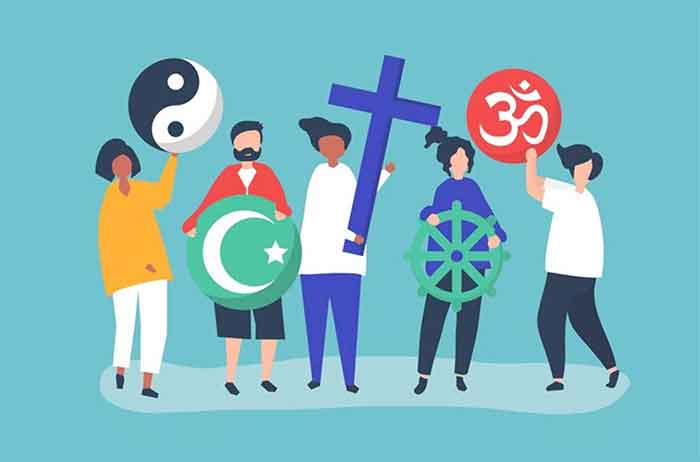
Every country, has its share of minorities, whether linguistic, cultural or ethnic. For nearly all the countries, maintaining and securing their interests is a problem. And, for the biggest democracy in the world with largest spectrum of diversity it becomes a far more complex. In India we established a National Commission for Minorities under the National Commission for Minorities act, 1992. We even created a Ministry of Minority Affairs in 2006 and a as nation we also celebrate. Minority Rights Day every year on 18th December with an aim to raise awareness of their rights. Despite all these efforts for years, the condition of minorities in the country have further degraded. The three prominent reasons for this are lack of representation, fear alienation and lack of societal and cultural intermingling.
Lack of Representation
Of the 1.21 billion Indians, 172.24 million are Muslim citizens, about 14.23 percent of the total population. Thus, at least 14 percent Muslim members should serve in the decision-making body of the country to serve Muslims properly. Yet the fact is far from it. In the lower house of the Indian Parliament, the number of Muslim MPs declined by around two-thirds between 1980 and 2014, even though Muslims’ proportion of the population increased over the same period. In 1980, the Muslim members in Lok Sabha were 49 (approx 10% of total) which declined to 30 (approx 6% of total) in 2009. In the 16th Lok Sabha, Muslim MPs occupy only 20 seats out of 545 seats (approx 3.5% of total). In 2014 for the very first time, no single Muslim MP was elected in Uttar Pradesh, where there is 18% population of minorities. Also, for the first time in the history the winning party had zero MPs from minority background in Lok Sabha in 2019. With such a high under-representation how can we expect that the policies aimed for the minorities in India are designed and implemented with their points taken into consideration. This also builds the narrative of the majority of the nation, in the sense that what seems to be ok to rest of the population is opposed by a small segment again and again, giving rise to the second main cause that is feeling of alienation.
Fear of Alienation
What is considered by many in the country as “the myth of alienation terror of minorities” is definitely not a myth any more, but something that happens and hopes the government to respond. However, why do minorities sound as they do (especially in last few years)? The political mechanism over the last five years has much to do with the problem. The causes for this may be expressive and aggressive incidents. In the past five years, the media have played a major role in establishing anti-Muslim Hindu discourse. Every mechanism was attempted to make the people of India know that Muslims are the country’s biggest challenge. For starters, Muslims’ wedding lives are anti-social, Muslims’ death is anti-national, even in the initial phase of Covid spread a single community was targeted again and again, etc. In the minds of the Hindus, this anti-Muslim idea does have effect affect in numerous ways. Some examples of this phenomenon include topics such as love jihad, Ram temple, Ghar Wapasi, and banning the triple talaq system. This leading to the third reason which lack of cultural interaction and exchange.
Lack of Societal and Cultural harmony and intermingling
When the thought of difference is deep rooted in to the society and ingrained in the minds of children since a very young age, the truth becomes weak. The lack of understanding of each other’s culture along with the years old biases make us believe that our interpretation of the situation is correct. And the real evils of society take advantage of this high information asymmetry between both the sides to spark communal disharmony and gain their own political agenda.
Solution: Social Activism & Cultural Interaction
Democratic advocacy is one form to fight tyranny. There is a lack of influential progressive leaders who work vigorously against the oppressive actions of the state. On the other hand, the state itself is involved in avoiding any behavior that it does not believe is in line with their vision and narrative. Nevertheless, many people are also committed for the well-being of immigrant groups.
Mr Dev Desai, a social worker for minority rights, is the social activist I had the pleasure of interacting with. He’s working with an ANHAD (Act Now for Harmony and Democracy). (Act Now for Harmony and Democracy). For him, personal experiences are biggest justification for working for an agency like ANHAD. He has a inspiring story which lead to some unique personal experiences and motivated him to work for minority communities in the country. The year 2002 was when Dev was a 10th-grade student, used to live and study in a location where Muslims mostly lived. The horrors of the Hindu-Muslim riots of 2002 in Gujarat are known to all of us, but the gruesome scenes and memories are very fresh and traumatizing for of both victims and other witnesses During such protests, most people worry on material harm such as loss of life or damage to property, but almost no one thinks about the cultural and emotional impact. Mr. Dev shared a related tale about how the bulk of his school’s Hindu students began to leave because of its location. Parents became overly careful about the safety issues that their Hindu children might have in an area of the Muslim majority on the presumptions that the other side is wrong. This shows the kind of divide created between the two faith groups, where an institute like school which meant for imparting education, sharing knowledge and bringing children together building a sense of community and oneness in them also was severely impacted. A huge issue for school was the dropout of many Hindu pupils, and so the administration and the teachers started to recommend that students not leave, except that most people did not agree with the school administration. Mr. Dev was the only one who opted not to leave the school and continue his study. He was thus the only Hindu child in school for around two years. During this time, he noticed that certain individuals with special interests in mind propagated the ideology of animosity entirely unexpected and false. Tales about how communal conflict has a systemic effect on people’s lives are exaggerated and hence how societal friction contributes to a deterioration of the country’s social structure needs to be stressed more strongly. He saw the difference in what was communicate din the society and what he personally experienced with his friends. Thus, realized the value of cultural exchange and the only way to educate people about and abridge the difference between reality and what seems to be real was social activism. Reach out to people around you, share your thoughts and experiences, incorporate theirs and be respectful.
Shiv Dutt Barhat is a student of IIM Ahmedabad
SIGN UP FOR COUNTERCURRENTS DAILY NEWSLETTER














































